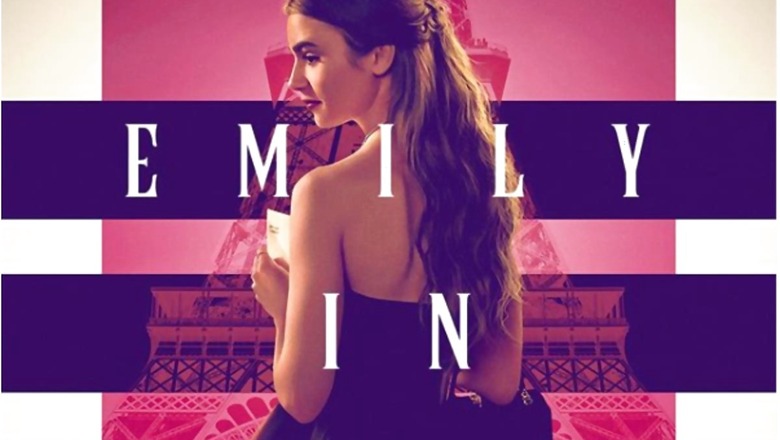
views
In 1998, when Sex and the City aired on HBO for the first time, it was iconoclastic because it broke the mould of how women were portrayed in American television. Adapted from Candace Bushnell’s book by creator Darren Star, the show albeit famous, was also wildly controversial. Some called it feminist, others anti-feminist, and a few even categorized it as post-feminist. But irrespective of the controversies, the characters of the show — Carrie Bradshaw, Miranda Hobbs, Charlotte York, and Samantha Jones — became archetypes for women all over the world, much before Buzzfeed came up with a quiz to determinate ‘Which Sex And The City Character You Are’.
The fifth, and perhaps the most important character of that show, however, was the city of New York. Darren Star beautifully captured the essence of New York — its fast-pace and loneliness, culture and architecture, theatres and eateries which forms a huge part of its unique identity. But more so, he succeeded in depicting New Yorkers with nuance, with their cosmopolitan outlook, and their racial, cultural, and gendered identities, they were never cardboard cut-outs, irrespective of the screentime the lesser significant characters were given.
In Star’s latest offering, Emily In Paris, the first season of which premiered on Netflix recently, he tries to show us another iconic city — Paris — through his lens, or rather through the eyes of the protagonist of the show, a Chicago based Marketing Executive named Emily (played by Lily Collins), a 20-something woman who moves to Paris for a year to work at a Parisian marketing firm, despite not knowing any French. Therefore, in this show, we are looking into Paris from the outside, through the eyes of an outsider.
Emily is Instagram savvy and quickly changes her profile name to EmilyInParis as soon as she settles into her new Parisian apartment. Star does a wonderful job of showing us Paris through the eyes of someone who has never been in the city before, each frame he sets up is Instagram worthy, and honestly, it is such a respite to see refreshing views of the French capital, after months of lockdown which has restricted travel opportunities for most of us. It is a good looking show, and that is perhaps its only redeeming quality because little else other than that actually works in its favour.
In Emily’s world, every Parisian we meet — her colleagues, the French hottie neighbour, her mean boss, her professional clients — are nothing but cliches. The colleagues of the Parisian firm are stiff, rude and cold, and immediately makes their dislike known for her, because according the popular stereotype French hate Americans. They dress in ‘sophisticated’ dark coloured clothes, in contrast to Emily’s blingy sequinned office wear (because what else are management executives from Chicago wearing to the office these days?) they smoke cigarettes at work all day long (although smoking in office buildings is banned in France), and wears baret (or is it Emily who wears them?).
Every Parisian woman character in the show seems like they have picked out their outfits from Pinterest’s idea board of Parisian style. Also, they are lazy and devoid of ideas as compared to the hard-working, smart and twinkle-eyed American girl, and of course, the only French woman character in a powerful position, that is Emily’s boss Sophie is not a feminist and endorses an advertisement that shows a naked woman walking down a bridge, with men staring at her. She dismisses #BalanceTonPorc, the French version of #metoo, much to the chagrin of Emily who thinks it is important to be ‘politically correct’ while depicting women’s bodies.
Throughout the show, Emily keeps talking about contributing to the Perisian firm by bringing in ‘the American perspective’, and as an audience, it doesn’t take long for you to understand that the storytelling in the show too is happening from the American perspective, which brings me to a crucial point: at a time when Netflix has such a varied and global audience, can it afford to be so tone-deaf to the culture of a country? Of course, every story is told from a certain perspective. If Indians were to make a film on the partition, it will not show the British in the best light perhaps, but to propel blatant stereotypes, without any nuance is perhaps not necessary.
Think of every stereotype you can think of about French people, and you’ll find them in this film. The French Intellectual snob is present as Emily’s fling, although his level of intellectualism is unfortunately limited to discussing the history of Cafe De Flore to which Jean-Paul Sartre and Simone de Beauvoir migrated to, after their favourite cafe across the street, Les Deux Magots, which was a regular haunt of many other literary giants apart from them — like Ernest Hemingway, Albert Camus, and Pablo Picasso — became overcrowded with tourists. Needless to say, it is a story oft repeated in popular culture, and if you know it already, well, you aren’t the only one. In fact, Emily In Paris is a drag, because it serves a stale story in a fancy package. There is hardly anything in it that your years of bingeing on romantic comedies have not taught you.
Collins drives Emily with energy and purpose, but it is not enough to make you forget the flaws in Emily’s character. Emily behaves like she is the high priestess of the temple of morality when she hears about Sophie’s relationship with a married client. Not just that, what is truly astounding about this show, especially coming from the maker of Sex And The City is how prudish it really is. There is a whole lot of talks about debauchery and sex, but that’s all there is. The phone sex session seems out of the PG13 audience’s playbook, and every other intimate scene ends with a kiss.
The only two delightful characters in Emily In Paris are Mindy (played brilliantly by Ashley Park), who despite having a backstory that makes her seem like an extra from the cast of Crazy Rich Asians holds her ground and the other one is Camille, a french girl and the girlfriend of the French hottie on whom Emily is crushing. Camille is fun, and free, and thankfully, not a stereotype.

















Comments
0 comment